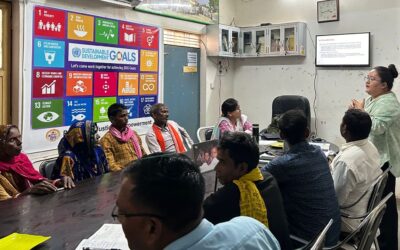Before they were rescued from slavery, residents of Sakdouri lived in terror.
“Someone promised us jobs at a brick kiln,” says Durga. But they were never paid. “When we asked the owner, he beat us” Durga says.
“The brick kiln owner and his supervisor threatened to throw me in the kiln furnace,” says Shagir.
The “brick belt” of India is notorious for enslaving impoverished and marginalized residents at sweltering furnaces that create building supplies for India’s burgeoning economy. Most slaves have borrowed money in a family emergency, and are being forced to work it off in bondage. Others are tricked by traffickers posing as legitimate labor recruiters.
Sakdouri residents took a dramatic step in the summer of 2012, and their courage resulted in one of the largest rescues in Free the Slaves history. One man slipped away from the brick kiln to another nearby village that Free the Slaves had helped liberate earlier. Residents there knew just what to do, and police were soon on the scene: 27 adults and 24 children were brought from slavery to freedom in a single day. Read more about the rescue here.
In the latest installment of our “Face to Face with Slavery” film series, you can see photos of the rescue, and how life has changed for residents of Sakdouri now that they are free. The film is called “What Freedom Looks Like.”
Free the Slaves South Asia Director Supriya Awasthi was on the scene when the rescue happened. “They were scared to come out,” she recalls. “I told them to come out…you’ll be safe, we are here.”
Supriya and our front-line partner organization MSEMVS helped villagers organize when they returned home to Sakdouri in trucks. It didn’t happen overnight, it took two to three years to ensure villagers won’t be preyed upon again.
“We are making our own choices and are earning our own livelihood,” Shagir says. They have also been paying it forward to others. “We have been conducting meetings village to village with 10 to 20 people, Shagir says, “We have been freeing other people from slavery.”
Sakdouri residents have created a freedom song to celebrate their liberation from slavery:
We will stand up for our rights.
By organizing, we keep our rights.
We will walk the path of truth.
We will not fear sticks, guns or slave owners.
By hard work we will achieve our destiny.
Now is the time to show our power.
Learn more about our India program and how our model for freedom works to free entire communites here.
See other films in our Face to Face with Slavery series here.



